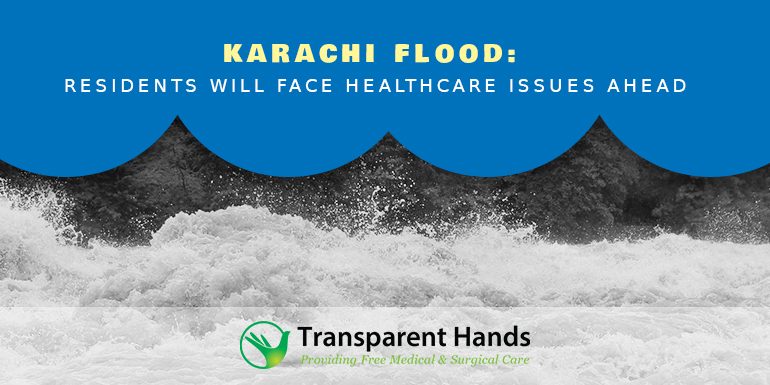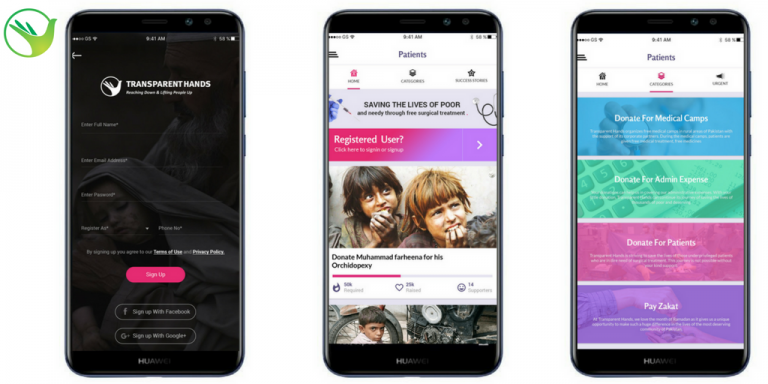Karachi Flood: Residents Will Face Healthcare Issues Ahead

Karachi: Pakistan’s largest metropolitan centre. Karachi generates the highest revenues in all departments, in the entire country. It is noteworthy that this port-city accounts for PKR 980 billion in tax returns, according to the Federal Board of Revenue. This sum is higher than the figures of all other cities, and even provinces. It also hosts a whopping 14.91 million people, making itself Pakistan’s most populous city. However, despite its undeniable importance to the Pakistani economy and despite being home to millions of individuals, it is perhaps one of the most neglected cities of the country. Governmental negligence, local mafia and departmental corruption on all levels, over the decades since Pakistan’s inception, have given us a pitiful image. Karachi stands as a decaying city, with poor and unstable infrastructure. Because it is a coastal area and does not receive much rain throughout the year, state agencies have completely ignored its sewerage and flood management systems. Therefore, every year, even due to the slightest rains, the drainage system in the city becomes dysfunctional, to say the least. This leads to an emergency, in which the populace of the city is exposed to all sorts of dangers and miseries. People must abandon their flooded houses, suffer from electric shocks (if there is electricity at all), deal with conveyance inconveniences, and perhaps the worst of all, endure acute healthcare issues. Karachi Flood: Residents Will Face Healthcare Issues Ahead.
It is a fact that flooding completely disrupts the healthcare situation in the affected areas. While there are certain immediate healthcare impacts on people, like injuries, electric shocks from electricity poles, hypothermia, animal bites, drowning and road accidents, these are not the only ones. These consequences of a flood are even though relatively easier to deal with, they still end up taking their toll on not only the healthcare infrastructure but also on the people. Chances are that due to the depressed systems and problems in conveyance, patients do not get timely response and treatment, which would subsequently result in the aggravation of the initial issue. The afflicted may progress to a higher stage of the ailment and may also lose their lives. The probability of this occurring is considerably high. It is because of problems like this that the death toll due to flooding is regarded highest.
Download our TransparentHands iPhone Application for Online Donation
The conditions worsen in the days that follow the original flooding, the area reports a spike in the rates of the spread of communicable diseases. Other than that, because of the poor sanitary conditions, due to the destruction of water and sanitation systems result in a variety of new issues and problems, and the outbreak of several diseases. People in affected areas are exposed to flood water mixed with sewerage and garbage. Such high levels of pollution yield horrible results on individuals’ health state. Direct contact with polluted water allows the spread of infectious diseases. Wounds due to whichever cause, when exposed to flood water, become highly infected, which can severely affect the afflicted person’s overall health. Apart from this, other medical conditions that become prevalent during the flood season are typhoid, cholera, and hepatitis A, all of which are because of unsanitary water exposure. These ailments are not epidemic-prone and are hence relatively less concerning. It is leptospirosis that raises extreme concern, as it is an epidemic. Caused by a certain class of bacteria sufficiently found in rodents’ urine, leptospirosis wreaks havoc in the healthcare department, as thousands of cases are noted every day. This cripples the hospitals and medical camps in the worst way, resulting in many lost lives.
Vector-borne diseases also become commonplace in the flood season. This may be an indirect consequence of the disaster, but it is unignorable. Even though initial flashes of flood destruct habitats of vectors, in the subsequent days, when the water recedes, the conditions become ideal for the same vectors, and many more, to thrive. About a lag of 3-4 weeks, the flooded city reports epidemics of vector caused diseases, like malaria and dengue. Several people lose their battle of life against these ailments.
The worth of human life is inexplicable. Governmental agencies strive to ensure the guaranteed provision of this fundamental right- the right of life. It is time that the state realizes the severe impacts of floods in Karachi on healthcare and individual life and takes definite positive steps in alleviating the problems faced by the flood management infrastructure so that such challenges to people’s well-being are not faced in the future.











Leave a Reply